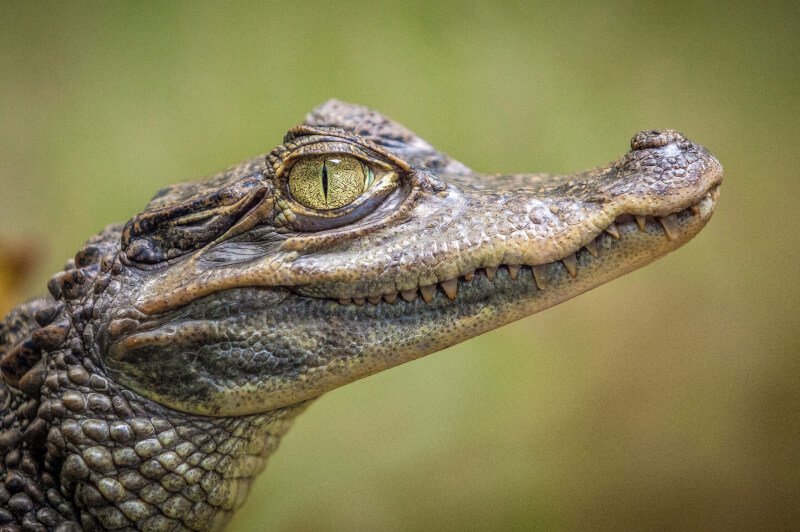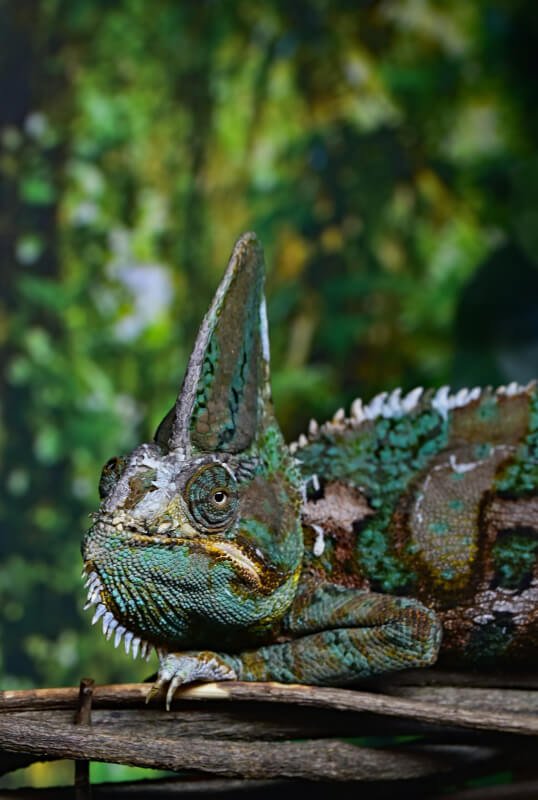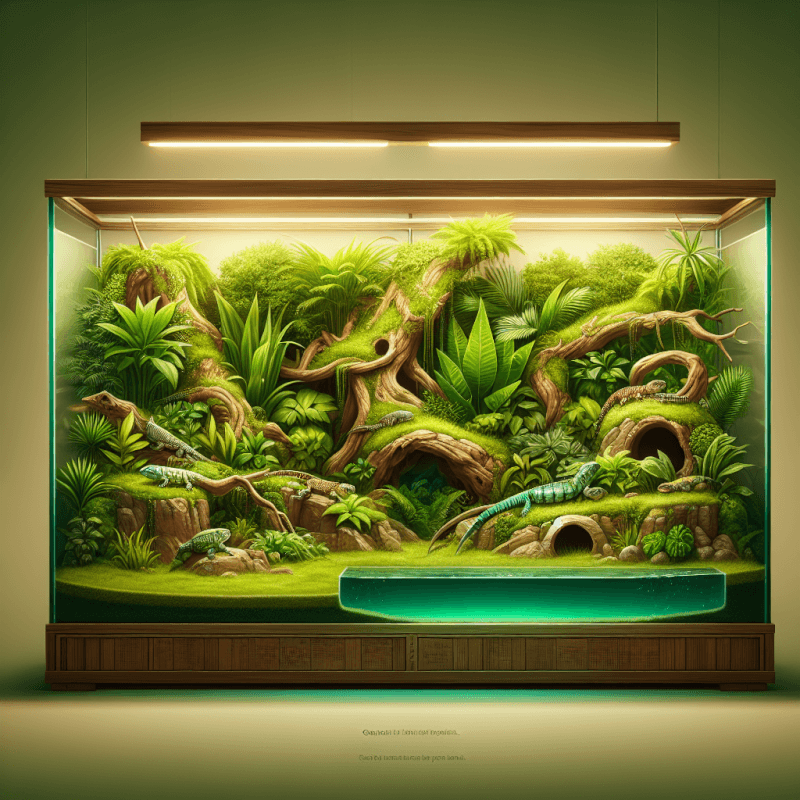Are you the proud owner of a reptile? Whether you have a pet snake, lizard, or turtle, proper ventilation in their enclosure is crucial for their health and well-being. In this article, we will explore the importance of reptile enclosure ventilation and the different methods you can use to ensure your scaly friend gets the fresh air they need. From natural ventilation to mechanical systems, we’ve got you covered. So sit back, relax, and let’s discover how to keep your reptile happy and healthy!

Importance of Reptile Enclosure Ventilation
The role of ventilation in reptile enclosures
Proper ventilation plays a crucial role in the overall health and well-being of reptiles. Ventilation refers to the exchange of air within an enclosure, allowing for the circulation of fresh air while removing stale and potentially harmful air. The process of ventilation helps regulate temperature, humidity, and air quality, which are all vital factors in creating a suitable habitat for reptiles. Without adequate ventilation, reptiles can suffer from poor air quality, heat stress, respiratory issues, and even death.
Why proper ventilation is crucial for reptiles
Reptiles have different respiratory systems compared to mammals and birds, making them highly sensitive to the air they breathe. Unlike humans, reptiles lack a diaphragm and rely on muscular movements to breathe. Therefore, they require a constant supply of fresh air to ensure proper oxygen intake and the removal of carbon dioxide. Insufficient ventilation can lead to a build-up of harmful gases, such as ammonia and carbon dioxide, which can be detrimental to reptiles’ health. Additionally, poor air circulation can result in stagnant air, causing high humidity levels and the growth of mold and bacteria, leading to respiratory infections and skin diseases.
How poor ventilation can affect reptiles
Insufficient or inadequate ventilation in reptile enclosures can have serious consequences for the well-being of these animals. Without proper airflow, the temperature inside the enclosure can become excessively hot, especially under heat lamps or other heating elements. This can lead to heat stress and even heat stroke, which can be fatal for reptiles. Stagnant air can also contribute to high humidity levels, promoting the growth of harmful fungi and bacteria. Respiratory infections, skin diseases, and eye irritations are common issues that can arise due to poor ventilation. Therefore, it is essential to understand and address the factors that impact the effectiveness of reptile enclosure ventilation.
Factors to Consider for Effective Reptile Enclosure Ventilation
Determining the right enclosure size for adequate airflow
One of the key factors in ensuring proper ventilation is providing an enclosure that is appropriately sized for the reptile’s needs. The size of the enclosure directly affects the circulation of air within it. A cramped or overcrowded enclosure can impede airflow, leading to inadequate ventilation. On the other hand, an enclosure that is too large may have areas where air becomes stagnant. It is important to research and understand the specific space requirements of the reptile species you are housing to ensure adequate room for proper airflow.
Choosing the correct type of ventilation system
Selecting the correct ventilation system is crucial for maintaining a healthy reptile enclosure. There are different types of ventilation systems available, including natural ventilation, forced ventilation, and a combination of both. Natural ventilation relies on the flow of air through openings, such as windows, vents, or holes in the enclosure. Forced ventilation, on the other hand, involves the use of fans or blowers to actively move air in and out of the enclosure. Additionally, a combination of natural and forced ventilation can provide the best of both worlds. The choice of ventilation system should be based on the specific needs of the reptile species, as well as the environmental conditions in which they naturally thrive.
Understanding the temperature and humidity requirements of reptiles
Temperature and humidity play a significant role in reptile health, and ventilation is closely tied to maintaining appropriate levels of both. Reptiles have different temperature and humidity requirements depending on their species and natural habitat. Proper ventilation helps regulate temperature by providing fresh air and preventing heat from building up excessively. It also aids in maintaining humidity levels by allowing for moisture exchange and preventing excessive condensation. It is essential to research the specific temperature and humidity requirements of the reptile species you are keeping and adjust ventilation provisions accordingly.
Types of Ventilation Systems for Reptile Enclosures
Natural ventilation
Natural ventilation relies on the natural flow of air through openings in the enclosure, such as windows, vents, or holes. This type of ventilation can be effective when the enclosure is placed in an area with adequate air movement, such as near a window or in a well-ventilated room. Natural ventilation is cost-effective and does not require additional equipment. However, it is important to ensure that the placement of the enclosure allows for adequate airflow and that the openings are properly sized to prevent escapes or ingress of unwanted pests.
Forced ventilation
Forced ventilation involves the use of fans, blowers, or other mechanical devices to actively circulate air in and out of the enclosure. This type of ventilation is particularly beneficial in situations where natural airflow is limited or when additional control over temperature and humidity is required. Forced ventilation can be achieved with the use of exhaust fans, intake fans, or a combination of both. It is essential to choose the right equipment and position them strategically to ensure optimal airflow and prevent drafts or excessive noise that may disturb the reptiles.
Combination of natural and forced ventilation
A combination of natural and forced ventilation can provide the benefits of both methods. This approach often involves using natural ventilation as the primary means of airflow, supplemented by fans or blowers to enhance air circulation. By strategically placing fans or blowers near ventilation openings, the movement of air can be further boosted. This combination allows for a more controlled and customizable airflow, ensuring proper ventilation while maintaining a natural feel within the enclosure. It is important to carefully balance the use of natural and forced ventilation to avoid creating excessive airflow that may be stressful for the reptiles.
Designing Ventilation Openings in Reptile Enclosures
Optimal placement of ventilation openings for air circulation
The placement of ventilation openings in reptile enclosures is crucial to ensure adequate air circulation. It is generally recommended to have both low and high openings to facilitate the natural movement of air. Low ventilation openings allow for the intake of fresh air near the bottom of the enclosure, while high openings enable the release of warm and stale air. This creates a natural airflow pattern within the enclosure, mimicking the reptiles’ natural environment. Additionally, positioning ventilation openings near heat sources, such as heat lamps or heating pads, can help dissipate excess heat effectively.
Sizing and spacing of ventilation openings
The size and spacing of ventilation openings also play a role in maintaining proper airflow. If the openings are too large, reptiles may escape, and unwanted pests or predators may enter the enclosure. Conversely, if the openings are too small or spaced too closely together, airflow may be compromised, leading to inadequate ventilation. It is essential to choose appropriate sizes and spacing based on the size of the reptiles, their ability to escape, and the type of ventilation system being used. Mesh or screens can be used to cover the openings, ensuring reptile safety while allowing for proper airflow.
Choosing appropriate covers or screens
When designing ventilation openings, it is crucial to choose appropriate covers or screens to prevent reptiles from escaping or coming into contact with potential hazards. The covers or screens should have small enough gaps to ensure the reptiles cannot pass through, while still allowing for proper airflow. It is important to regularly inspect these covers or screens for damage or wear and replace them as necessary to maintain the enclosure’s security and ventilation.

Maintaining and Cleaning Ventilation Systems
Regular cleaning and inspection of ventilation openings
To ensure effective ventilation, regular cleaning and inspection of ventilation openings are necessary. Dust, debris, and other particles can accumulate on the covers or screens, obstructing airflow and reducing ventilation efficiency. It is recommended to clean the covers or screens regularly by gently removing any debris or dust buildup. Moreover, inspecting the ventilation openings for any signs of damage or blockage is important. Any damages should be promptly repaired or replaced to maintain proper ventilation and prevent escapes.
Removing dust and debris from ventilation systems
In addition to cleaning the ventilation openings, it is important to remove dust and debris from the ventilation system itself. Dust particles can accumulate on the fan blades or within the intake and exhaust vents, reducing the overall efficiency of the system. Regularly inspecting and cleaning the ventilation system, including any fans or blowers, will help ensure optimal airflow and prevent the buildup of allergens or contaminants that can be harmful to reptiles.
Troubleshooting common ventilation issues
Like any other system, ventilation systems can encounter issues that affect their functionality. Common problems may include noisy fans, decreased airflow, or irregular temperature and humidity levels. It is important to troubleshoot these issues promptly to maintain a healthy environment for reptiles. This may involve cleaning or replacing faulty components, adjusting fan positioning, or seeking the assistance of a professional if necessary. Monitoring and addressing these issues on a regular basis will help ensure the ventilation system operates effectively and provides the necessary airflow for the reptiles’ well-being.
Importance of Temperature Regulation in Reptile Enclosures
How ventilation aids in maintaining optimal temperatures
Temperature regulation is crucial for reptiles, as they depend on external heat sources to maintain their body temperature. Proper ventilation plays a key role in preventing excessive heat buildup within the enclosure. Without adequate airflow, heat emitted from heat lamps or other heating elements can become trapped, resulting in dangerously high temperatures. Ventilation allows for the dissipation of excess heat, helping to maintain optimal temperatures and preventing heat-related stress or illness in reptiles.
The dangers of improper temperature regulation
Improper temperature regulation can have serious consequences for reptiles. If the enclosure becomes too hot, reptiles may experience heat stress, dehydration, or even organ failure. Conversely, if the temperature drops too low, reptiles may become lethargic, lose their appetite, or have difficulty digesting food. Inadequate ventilation can contribute to these issues by preventing proper heat dissipation or reducing the effectiveness of heating sources.
Using ventilation to prevent heat buildup
Proper ventilation offers a practical way to prevent excessive heat buildup in reptile enclosures. By allowing warm air to escape naturally or through the use of fans or exhaust systems, ventilation helps maintain a suitable temperature for the reptiles. This prevents the enclosure from becoming overheated and ensures a comfortable and safe environment for the reptiles to thrive. Regular monitoring and adjustment of ventilation provisions are essential to maintain optimal temperatures based on the specific needs of the reptile species.

Addressing Humidity Levels in Reptile Enclosures
Maintaining proper humidity through ventilation
Humidity regulation is crucial for reptiles, as different species have specific humidity requirements. Ventilation plays an important role in maintaining proper humidity levels within the enclosure. Without adequate airflow, moisture can become trapped, leading to excessive humidity and an increased risk of mold and bacterial growth. By facilitating air exchange, ventilation helps remove excess moisture, preventing a damp and humid environment that can be harmful to reptiles.
The risks of excessive or insufficient humidity
Both excessive and insufficient humidity levels can pose risks to reptiles. High humidity can create a breeding ground for mold, fungi, and bacteria, leading to respiratory infections and skin diseases. It can also interfere with the shedding process, resulting in retained shed or skin infections. On the other hand, low humidity can cause dehydration, respiratory issues, and difficulty shedding. Ventilation provides a means to regulate humidity levels by allowing for the escape of excess moisture or the retention of moisture when needed.
Dealing with condensation and excess moisture
Condensation and excess moisture are common issues in reptile enclosures, especially in humid environments. Proper ventilation helps mitigate these issues by providing airflow to minimize condensation and remove excess moisture. Strategic placement of ventilation openings near areas of high humidity, such as water bowls or misting systems, can aid in preventing excessive condensation. It is important to regularly monitor humidity levels, adjust ventilation provisions accordingly, and address any sources of excessive moisture to create a balanced and healthy environment for reptiles.
Preventing Escape and Ensuring Security
Balancing ventilation with security measures
While ventilation is essential, it is equally important to ensure the security of the enclosure and prevent escapes. Reptiles are skilled climbers and escape artists, so it is crucial to strike a balance between providing adequate ventilation and implementing appropriate security measures. Mesh or screens used to cover ventilation openings should be securely fastened and have small enough gaps to prevent reptiles from squeezing through. Regular inspections and maintenance of these security measures will help ensure the safety of the reptiles while maintaining optimal ventilation.
Choosing appropriate materials and construction methods
When constructing a reptile enclosure, it is important to choose appropriate materials and construction methods that prioritize both ventilation and security. Opt for materials that are sturdy, durable, and resistant to damage caused by reptiles. For ventilation openings, use mesh or screens that are not easily chewed through or damaged. Additionally, ensure that the enclosure is escape-proof by inspecting the integrity of walls, ceilings, and floors, and employing appropriate construction techniques.
Securing ventilation openings to prevent escapes
Securing ventilation openings is essential to prevent reptiles from escaping while maintaining proper airflow. It is important to regularly inspect the covers or screens used for ventilation openings to ensure they are properly fastened and undamaged. Reptiles can be surprisingly resourceful in finding ways to escape, so it is crucial to address any weaknesses or gaps promptly. By implementing secure measures to prevent escapes, reptile keepers can enjoy the benefits of effective ventilation while ensuring the safety of their pets.

Risk of Contaminants and Airborne Pathogens
The importance of filtration in reptile enclosures
Reptile enclosures, particularly those with forced ventilation systems, can benefit from the use of appropriate filters to minimize the risk of contaminants and airborne pathogens. Filters can help remove particles, such as dust, pollen, and spores, from the air circulating within the enclosure. This not only improves the air quality for reptiles but also reduces the risk of respiratory issues caused by inhalation of harmful substances. By investing in high-quality filters and regularly maintaining and replacing them, reptile keepers can create a healthier and cleaner environment for their pets.
Preventing the spread of diseases and parasites
Ventilation systems can inadvertently become a pathway for the spread of diseases and parasites in reptile enclosures. Airborne pathogens, such as viruses and bacteria, can be transmitted through improper ventilation, leading to the rapid spread of infections among reptiles. It is crucial to maintain strict hygiene practices, including regular cleaning and disinfection of the enclosure and ventilation system. Additionally, keeping reptiles quarantined when introducing new individuals to a group can help prevent the spread of potential diseases or parasites.
Addressing potential environmental contaminants
Reptile enclosures are exposed to various potential environmental contaminants, such as chemicals, pesticides, and fumes. Proper ventilation helps remove or dilute these contaminants, reducing their concentration within the enclosure. It is important to be mindful of the surroundings in which the enclosure is placed, avoiding exposure to harmful substances. Additionally, monitoring ventilation systems and maintaining them properly will ensure their effectiveness in minimizing the accumulation of contaminant particles within the enclosure.
Monitoring and Adjusting Ventilation Systems
Using hygrometers and thermometers to assess conditions
Regular monitoring of temperature, humidity, and airflow within reptile enclosures is essential for maintaining a suitable environment. Hygrometers and thermometers can be used to measure these factors accurately. By monitoring these conditions consistently, reptile keepers can identify any imbalances or deviations from the species’ requirements. This allows them to make necessary adjustments to the ventilation system, such as altering fan speed, adjusting the positioning of ventilation openings, or adding supplemental heating or humidifying equipment.
Modifying ventilation provisions based on reptile behavior and needs
Reptile behavior and needs may change over time, requiring modifications to the ventilation provisions within their enclosures. Reptiles may exhibit different behaviors during breeding seasons, shedding periods, or when experiencing discomfort. By observing their behavior and assessing their needs, reptile keepers can adjust ventilation systems accordingly. This may involve providing additional airflow to cool down the enclosure during mating seasons or adjusting humidity levels to aid in the shedding process. Being responsive to behavioral cues and adjusting ventilation provisions accordingly will contribute to the overall health and happiness of the reptiles.
Seeking professional advice for complex ventilation setups
In some cases, reptile enclosures may require more complex ventilation setups, particularly for large or specialized habitats. Seeking professional advice from reptile veterinarians, herpetologists, or experienced reptile keepers is recommended for these situations. Professionals can provide valuable insights into addressing specific challenges and ensuring that ventilation systems are properly designed and implemented. Their expertise and experience can help optimize the ventilation system to meet the unique needs of the reptiles housed within the enclosure.
In conclusion, proper ventilation is of paramount importance for reptile enclosures. It contributes to the overall health and well-being of the reptiles by facilitating temperature and humidity regulation, preventing the accumulation of harmful gases, promoting air circulation, and minimizing the risk of airborne pathogens. The choice of ventilation system, design of ventilation openings, regular maintenance and cleaning, and the consideration of temperature, humidity, security, and air quality all play crucial roles in ensuring effective reptile enclosure ventilation. By properly addressing these factors and monitoring the conditions within the enclosure, reptile keepers can create a safe, comfortable, and healthy environment for their beloved reptile companions.


